Reflective Listening
{12 minutes}
Reflective Listening
Sometimes we only really understand what we just said when someone else repeats it back to us. Strange, isn't it? It's about mirror neurons. Part of what allows me to know myself is you reflecting it back to me. This is what we can be for one another: really good mirrors.
Something fascinating about our neurobiology, and our sense of self, is that when we say something—express an emotion, share a thought, make an observation—often we don’t truly know or feel or experience what we’ve said unless someone reflects it back to us. It sounds kind of silly. I just said that. But because of our mirror neuron system, there is something necessary about being reflected. Rainbow Markell, one of our mentors in mindful communication, says that most of her training came from working with kindergartners. When someone says something, you say back to them in their own words what they’ve said.
"I’m mad!"
"I heard you say you’re mad!"
You mirror the tone. You use their exact words. Here’s the bizarre thing: often the mirroring itself changes the state. You didn’t do anything dramatic. You simply said back to them what they said. But they’re not mad anymore. Because what they needed was for you to see and hear that they were mad. They needed to be seen in the mad. Once it is seen, validated, acknowledged, they don’t need to be mad anymore. Mad served its purpose.
It’s not always this simple. But it often is. As deep nature connection expert Jon Young observes, We don’t share a context anymore. Once upon a time, when we shared the land, and a tribe, and a worldview, we shared a context, and we could agree on what things meant. But every head is a world, and now most of us live in completely different realities, shaped by our social locations, genders, jobs, economic status, political outlook, religious beliefs, etc. So we need to show others that we see and hear them. In the moment when we do that properly, we step out of that bubble of isolation, that bubble of our own world-head and we are with someone. There’s a we. A connection. The moment that happens, a tiny energetic thread forms between two people. The San Bushmen call this building ropes.
One of the ways that we can practice this is by becoming aware of our own facial expressions while other people are talking. Video chat platforms, such as Zoom, give us an interesting opportunity to do this in gallery view. If someone else is expressing emotion, is my face tracking with their emotion, or is it neutral? Part of our socialization into whiteness / professionalism / objectivity is the poker face. The face that doesn’t accompany emotion. This is a dis-connective habit that for many of us is unconscious. If I’m talking to the blank face, my mirror neuron system doesn’t know if I’m being heard. At a deeper level of self-work, it is good for us to investigate with whom our faces are blank. Is it everyone? Certain social groups? What changes in your relationship with someone that allows your face to move out of blankness? (Hint: facial expressivity is connected to a felt sense of safety.) Is it building rapport? Trust? A certain amount of time knowing someone? By becoming aware of what is driving the mask of neutrality, you can begin to dismantle it in service of connection.
The video above is a deeper dive into basic techniques around reflective listening.
Related Practices:
Reflective Listening is a core practice in the Connecting with Others section of our work. It is a foundational practice in Lee Mun Wah's Relational Mindfulness framework.Photography: | Licensed from Pexels.com, used with permission.


